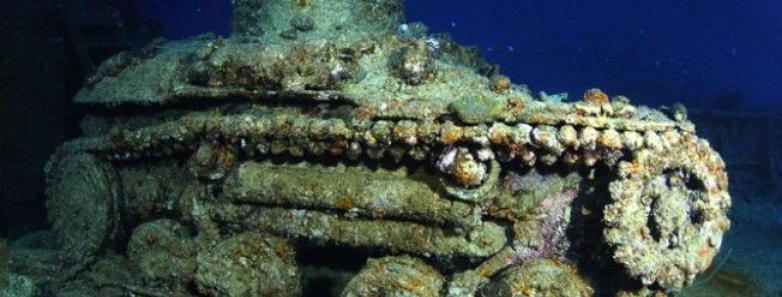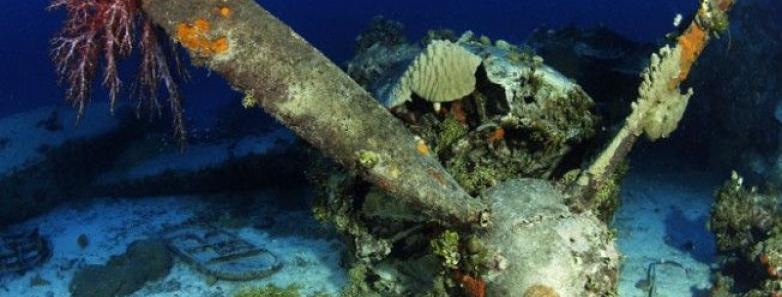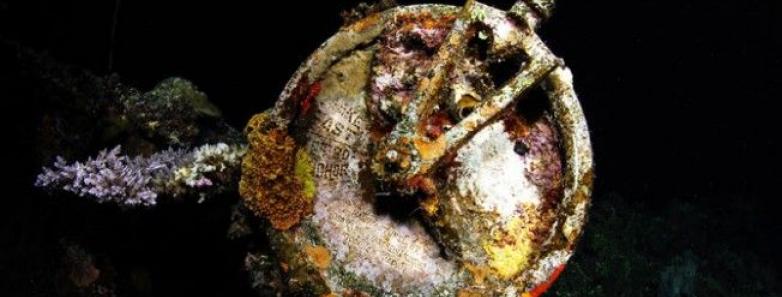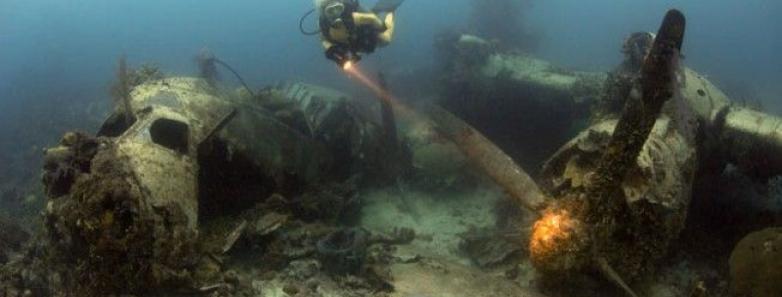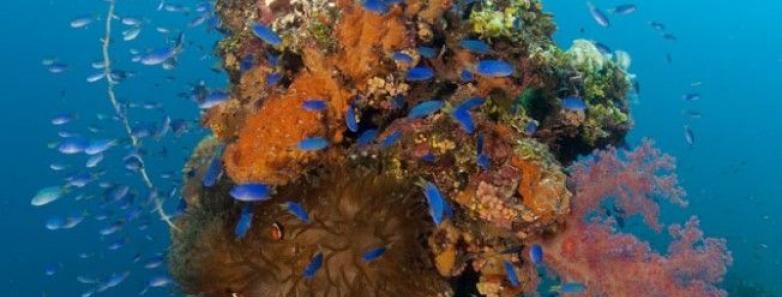Scuba Diving in Truk Lagoon, Micronesia
Truk Lagoon Diving Highlights
Truk Lagoon (actually Chuuk Lagoon) is an atoll in the central Pacific, approximately 1,800km northwest of Papua New Guinea. It is situated within Chuuk State, part of Micronesia, and is renowned as one of the best wreck diving destinations in the world. Diving Chuuk Lagoon is a highlight of many recreational and technical divers' careers, and the wrecks can be explored from either a liveaboard or land-based resort.
Truk Lagoon scuba diving is best known for its 60+ World War II wrecks, which easily makes Chuuk Lagoon one of the world's best wreck diving destinations. Due to its strategic location, Truk Island used to be a Japanese Naval Base during WWII. Today the shipwrecks of Truk Lagoon offer a good amount of marine life, with many soft corals and schools of small fish. Some of the wrecks are quite deep, reaching 215 feet (65 meters), while others have parts of the superstructure as shallow as 40 feet (12 meters). This makes Truk Lagoon an excellent destination for all experience levels, from recreational to advanced technical divers.
LOOKING FOR A Liveaboard IN trUk lagoon?

The Pacific Master, formerly the Solomons PNG Master, is a custom-designed liveaboard yacht that can accommodate up to 20 guests in its 12 spacious and comfortable cabins. This steel yacht was designed with the diver in mind to ensure only the best holiday diving experiences on Truk Lagoon dive safaris. View our exclusive specials with up to 30% off Master Liveaboards
Jump to:
Marine Life & Environment - Top Dive Sites - Diving Conditions
How to Get There - How to Dive Truk - Best Time to Dive
NEW! Find a Liveaboard - Practical Information - Book a Trip
Intro to diving Truk Lagoon
Though known for its amazing wreck diving, Truk Lagoon is surrounded by a barrier reef. You can see corals of all shapes and colors, plus what is even more amazing, most of the wrecks are covered in soft coral. Even if wreck diving is not your favorite, it is full of beautiful coral and it is amazing to see tropical fish swimming around tanks, bicycles, trucks, torpedos, airplane parts, and much more.
The lagoon offers dive sites for every level of scuba diver. You can find shallower wrecks to dive at or there are also options for exploring deep inside various wrecks. Marine life enthusiasts will be captivated by all the marine life that the soft corals on wrecks have attracted. You can see plenty of macro objects like nudibranch and anemones or even larger animals like reef sharks. The dive conditions are great with warm waters all year round and very little current inside the lagoon that makes the dives relatively easy.
TRUK LAGOON LIVEABOARD AVAILABILITY
Please contact us for the latest availability of Odyssey Adventures.
WHERE IS TRUK LAGOON?
The name "Truk" is actually a corruption of the native name for this area, Chuuk, which is part of the Federated States of Micronesia. Many know it also by the name Chuuk Lagoon but for divers, it is more known as Truk Lagoon or Truk Island.
View Location on Google Map
BEST TIME TO DIVE
The diving season in Truk Lagoon lasts year-round as visibility is fairly consistent year-round and rain is intermittent. However, it's important to take note that the rainy season lasts from April to December, and while the dry season lasts from December to April.
MARINE LIFE & BEST DIVE SITES
MARINE LIFE & PHOTOGRAPHY SUBJECTS
The wrecks of Truk Lagoon host beautiful soft corals and schools of small fish. There are reef sharks swimming by, but they can be hard to take photos of. However, numerous species of large jellyfish abound in Truk. While macro life may not be as abundant here as in other places nearby, there are various nudibranchs, anemones, porcelain crabs, shrimps, and small fish to photograph.
List of some of the marine life that you can see in Truk Lagoon:
- Grey Reef Shark
- Blacktip Shark
- Whitetip Shark
- Tuna
- Squirrelfish
- Anemones
- Moray Eels
- Barracudas
- Blennies
- Trevally
- Porcelain Crab
- Shrimp
- Nudibranch
- Scorpionfish
DIVING CONDITIONS
Visibility: You are in a lagoon, so visibility is good but not excellent; 40-60 ft. / 12-18 m. is the norm, and 30 ft. / 10 m. visibility would be a bad day. Sometimes visibility can reach 80 ft. / 24 m. or more, especially if it hasn't been raining (November - February).
Water Temperatures: 81-84 F / 27-28 C in the winter, 83-86 F / 28-30 C in the summer / early fall.
TRUK'S BEST DIVE SITES
There are far too many wrecks to explore at Truck Lagoon, so here are some of the best dive sites in the area:
The San Francisco Maru - It is the most famous wreck because of its 3 tanks with guns on the deck, but it is also very deep, sitting at 170 ft (52 meters). Thus the wreck is only suitable for advanced divers that can see the tanks or technical divers who wish to go deeper. The wreck is not surrounded by a lot of marine life, but it has some amazing war artifacts.
The Fujikawa Maru - Is a favorite wreck to dive for many scuba divers as it is filled with fish and corals. The ship still has a gun perfectly intact and you can easily access the staterooms and baths.
Betty Bomber - A shallow wreck that is great for all levels of divers. The plane used to lit up when fired its guns which gave it the nickname "flying cigar". The wreck lies around 65 feet (19 m) but lost its nose, engines, and wingtip that still can be found around 325 feet (100 m) away from the wreck.
The I-169 "Shinohara" - The sunken submarine that accidentally flooded is now a wonderful dive site. You cannot enter the submarine but diving around is truly spectacular, plus it's a favorite spot for jellyfish and occasionally you can spot some turtles, rays, or sharks passing by.
TRUK LAGOON TRAVEL INFORMATION
HOW TO GET THERE
Fly into and out of Chuuk Airport (TKK) - we recommend arriving several days in advance of embarkation day due to frequently delayed or canceled flights. Stay at L5 Hotel, Truk Stop, or Blue Lagoon for your extra nights in Chuuk.
From the US, flights route through Honolulu (HNL) or Guam (GUM), where you transfer to the United Airlines island-hopper service to Chuuk.
From Europe and Asia, flights route through Manila (MNL), Tokyo (NRT), or Seoul (ICN) and then to Guam (GUM), where you transfer to the United Airlines island-hopper.
HOW TO DIVE TRUK
Both liveaboard & land-based options are available.
TOPSIDE & NON-DIVING ACTIVITIES
If you have time, don't forget to do some WWII relic excursions! Deep-sea fishing trips beyond the outer reefs can also be arranged. Other water activities like kayaking or snorkeling are also possible. And of course, you can just enjoy the beautiful beaches.
Other Useful Information
Practical Information
- Currency: US Dollar (USD)
- Language: English is a primary language
- Main Airport Code: TKK
- Time Zone: UTC+10
- Electricity: 120V
GOT QUESTIONS? READY TO BOOK?
Call us today at +1-310-915-6677 or email us info@bluewaterdivetravel.com
And let us book your dream vacation!

